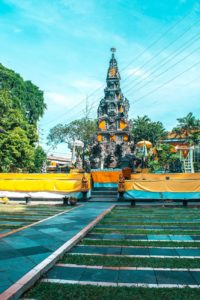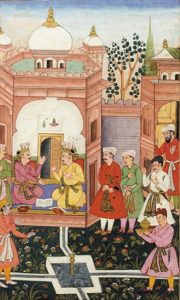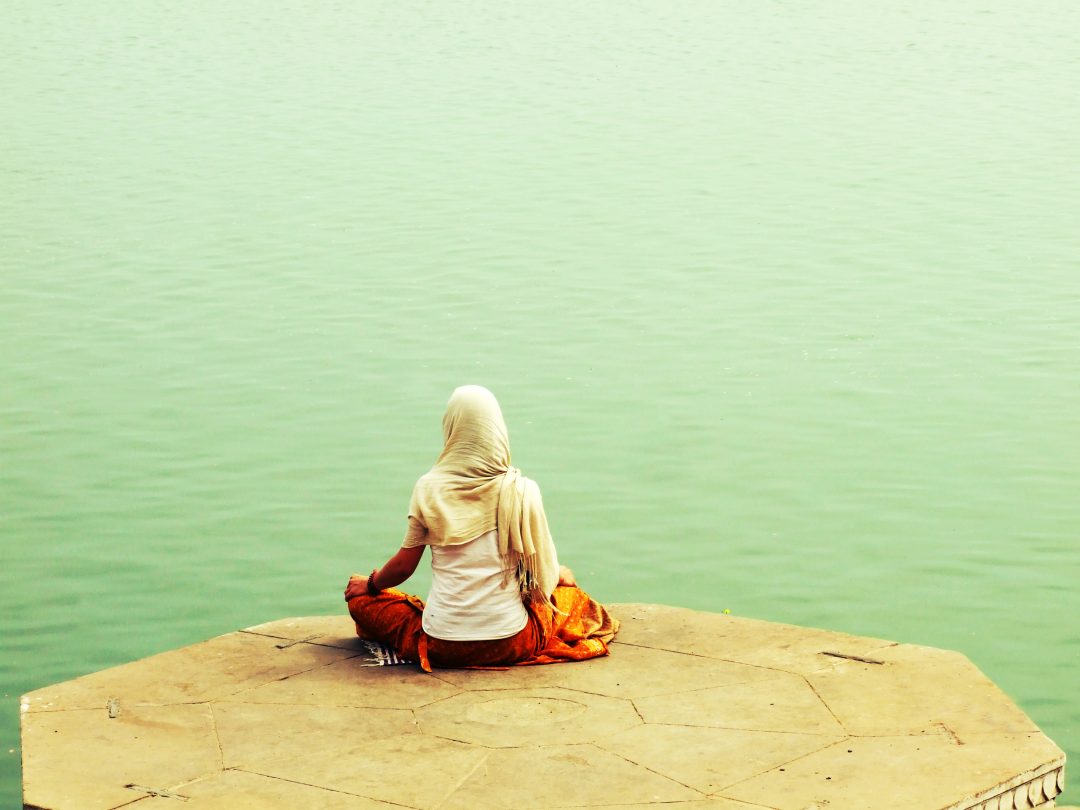Hinduism: An Introduction
The word Hindu has a Persian origin. It came from the Persian name of the river Sindhu (in English Indus), along the banks of which the religion originated and flourished. The word Hindu is not mentioned in any of the ancient religious texts of India. The word Hinduism was introduced by the British who came to colonize India. In Sanskrit Hinduism is referred to as Sanathana Dharma, meaning the eternal law. The word Hindustan was used by the Arab Muslim travelers who came to India and not by any Indian. They called the land of Hindus, Hindustan.
Hinduism – the third largest religion in the world
It is the major religion of the Indian subcontinent. The age and origin of the Hindu religion is still a controversy. Some scholars date back Hinduism to the Indus- Valley Civilization of 3200 BC 1600 BC. While others are of the opinion that it originated with the invasion of Aryans from Persia. Recent archaeological and geological evidence and linguistic analysis of Vedas do not support the theory of invasion of Aryans. In fact, Hinduism can be considered as the net result of the amalgamation of traditions and beliefs of Aryans, the Indus Valley people, and the Dravidians.
Hinduism does not have a specific founder, teacher or prophet. It does not adhere to only one sacred text or core doctrine. The sacred texts of Hinduism were written by different rishis, sages or gurus. Hindu religion does not ask its followers to accept anyone’s specific idea. It has a variety of ideas and practices developed during the course of time. So in the strictest sense, Hinduism can not be considered as a religion but as a cultural system or asset of traditions and beliefs evolved over a long period of time. Moreover, Hinduism does not have any central controlling authority or organization as other religions of modern age do have. Hinduism is an umbrella under which a wide spectrum of beliefs and practices are exercised.
The major texts of Hindu religion include, but not limited to, Vedas Brahmanas Aranyakas Upanishads Puranas Epics Smrutis.
Among the abovementioned religious texts, Rig Veda is the oldest text, which is a collection of devotional hymns attributed to natural forces personified as anthropomorphic gods. The Rig Veda consists of 10 books (mandalas), which contain 1028 hymns (suktas), consisting of 10522 verses (mantras). The entire text was kept alive for centuries in oral form recited and memorized from generation to generation until it was compiled and written down by Vedavyas.
Upanishads are collections of philosophical thoughts of Vedic era. They detail the metaphysical nature of the universe and soul. Upanishads are the search for knowledge by the rishis (ancient Indian sages and scholars) through meditation, inner vision, and contemplation.
Even though Bhagavat Gita is not an independent religious text, but because of the greatness of the content, it stands separate as a religious text. In fact Bhagavat Gita forms a part of the huge epic Mahabharatha. It contains the whole philosophical concept of all Vedas and all Upanishads in abridged form. Hence Hindus consider Bhagavat gita as their greatest religious text. In Hindu religion, it has the same status as the Bible of Christianity and the Quran of Islam.
The concept of God in Hinduism is very confusing to the world outside Hindu religion.
Dig deep into the heart of Hinduism, you will find monotheism. Hindu religion believes in one and only Supreme Spirit- the universal soul called Brahman. Brahman is transcendental and formless. It also believes in individual spirits or souls of living beings- called Atman. It is the true ‘self’ of every living being and is identical to Brahman. Once you know and feel the truth that your Atman is a part of Brahman, you will achieve Moksha, which means liberation. This knowledge is called the ultimate truth.
 However, most of the world are often surprised to know the multitudes of gods that Hinduism has. Hindus does not have the old man in the sky concept for god (credit: Mr. Subhamoy Das). And it is not easy for a layman to understand the abstract concept of the universal soul. Idol representation and personified gods are the easy ways by which layman can grasp the concept of god. Different gods of Hindu religion, in fact, represents the different aspects of the one and only universal soul. The brain of the body related to cognitive processes, limbs related to mechanical works and heart related circulation of blood, but all in one together constitute the body. In the same respect, god Brahma represents the creative aspect, god Vishnu the preservative aspect and god Shiva the destructive aspect of the Supreme Spirit. Goddess Saraswathy represents the knowledge, goddess Lakshmi represents wealth and god Ganesha is worshipped for removing the obstacles in the path of life. Every Hindu has the spiritual freedom to select any of the aspects of the Supreme Brahman which satisfies his spiritual craving. In Hindu religion idol is termed as vigraha which means ‘to grasp firmly’ or as moorti meaning ‘materialization’. So vigraha is a symbolic representation that helps the mind to grasp firmly the abstract idea of God.
However, most of the world are often surprised to know the multitudes of gods that Hinduism has. Hindus does not have the old man in the sky concept for god (credit: Mr. Subhamoy Das). And it is not easy for a layman to understand the abstract concept of the universal soul. Idol representation and personified gods are the easy ways by which layman can grasp the concept of god. Different gods of Hindu religion, in fact, represents the different aspects of the one and only universal soul. The brain of the body related to cognitive processes, limbs related to mechanical works and heart related circulation of blood, but all in one together constitute the body. In the same respect, god Brahma represents the creative aspect, god Vishnu the preservative aspect and god Shiva the destructive aspect of the Supreme Spirit. Goddess Saraswathy represents the knowledge, goddess Lakshmi represents wealth and god Ganesha is worshipped for removing the obstacles in the path of life. Every Hindu has the spiritual freedom to select any of the aspects of the Supreme Brahman which satisfies his spiritual craving. In Hindu religion idol is termed as vigraha which means ‘to grasp firmly’ or as moorti meaning ‘materialization’. So vigraha is a symbolic representation that helps the mind to grasp firmly the abstract idea of God.
You need some kind of images to understand and know God; images like mental image, verbal image or physical image. Mental images are possible to saints with a high level of thinking. Concepts of God conveyed through language are verbal images and idols are physical images.
Worship of God in Hinduism is called Pooja (veneration).
Pooja can be performed either at home or a temple. It is not obligatory for a Hindu to visit a temple or perform the pilgrimage. Most of the Hindus perform pooja every morning and/ or evening after the bath. A clean dress, a clean body, and a clean mind are necessary. Cleaning or purification with water is a common practice. Every temple has a pond and those who visit the temple are required to take a bath in the pond before entering the temple. Currently, this practice had been replaced with symbolic washing of feet, hands, and face.
Pooja usually includes the lighting of oil lamps, incense and camphor and offering of flowers, fruits, and food. Pooja may be observed with silence or with prayers.
The basic concepts of Hinduism are:
Belief in the one Supreme Spirit as the universal soul referred to as Brahman. belief in the individual soul of every living thing referred to as Atman. all living things go through a cycle of birth and rebirth. the universe itself undergoes endless cycles of creation, preservation, and dissolution. the status of the being in each birth is determined by the quality of Karma (right action) of the previous life. one can not alter his past life but can mold the next life by purifying the karma of this life. the chain of birth- rebirth can be broken by self-realization- the knowledge that one’s own Atman is not indistinct from Brahman. through self-realization, the being can attain Moksha (liberation).
Hence, self-realization is the ultimate goal in the life of a Hindu. The methods or paths (Yogas) by which one can attain the goal are:
Bhakti yoga through love and devotion for god. Karma yoga through righteous and responsible actions or duties. Raja yoga through meditation. Jnana yoga through knowledge and wisdom.
According to Hindu religious system, every human life has four specific stages or phases. These phases are known by the name Ashramas.
 Brahmacharya– the first phase of life involves living and studying with guru (teacher) in gurukula (school). This is student life. Students shall have a life of simplicity and celibacy. Grihastha- after the student life, the second phase starts with marriage. This is the life of a householder, in which one has to support his parents, his own family and guests. Vanaprastha- this is the retirement phase when duties of child-rearing and other responsibilities are over. Duties are handed over to children and most of the time is spent on religious works. Sanyasa- the final phase in which one is totally withdrawn from the physical world. Most of the time is spent in meditation and finally sheds the body for moksha (liberation).
Brahmacharya– the first phase of life involves living and studying with guru (teacher) in gurukula (school). This is student life. Students shall have a life of simplicity and celibacy. Grihastha- after the student life, the second phase starts with marriage. This is the life of a householder, in which one has to support his parents, his own family and guests. Vanaprastha- this is the retirement phase when duties of child-rearing and other responsibilities are over. Duties are handed over to children and most of the time is spent on religious works. Sanyasa- the final phase in which one is totally withdrawn from the physical world. Most of the time is spent in meditation and finally sheds the body for moksha (liberation).
Non- violence is a tradition in Hindu religion.
In Sanskrit (the ancient Indian Vedic language) it is called Ahimsa. It is a code of conduct that bars the killing or injuring of any living being. But it is not purely a Vedic concept. Killing for self-defense and sacrificial killing of animals are mentioned many times in Vedas. Ancient Rishis used to eat the meat of animals killed in sacrificial rituals. Total non- violence on all creatures and ban on non- vegetarian food was of recent origin when Brahmins acquired prime authority in society and Varna system of society was replaced by caste system. Hindu society considers cow as a sacred animal and so the majority of the Hindus abstain from eating beef. Observant Hindus follow the vegetarian diet to respect the Ahimsa principle.
The caste system in Hindu religion often attracted severe criticism from both the outside world and from Hinduism itself. In fact, the caste system as we know today is not from the classical Hindu system.
According to the classical Hindu system, society was divided into four Varnas (classes or categories), purely based on profession and not by birth.
Brahmins the clergy, teacher, religious authority Kshatriya the warriors, administrators, political authority Vaisyas the merchants, farmers, the business persons Shudras the servants, labors.
The Varna system was originally evolved for the classification of human duties in a healthy society.
The system allowed free movement within the Varnas. So a Brahmin’s son can be a Khatriya or Vaisya. The caste system practiced today is not mentioned anywhere in any of the Hindu scriptures.
Hindu religion consists of vast varieties of rituals and practices in everyday life. Since the beginning of gestation to death or even after the death of a person, hundreds of religious rituals are performed by Hindus. Even though the way of performing rituals and time of performing them may vary from place to place, but the basic concept remains the same and is shaded under the huge umbrella of Hinduism.






